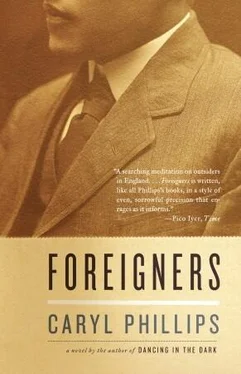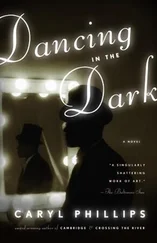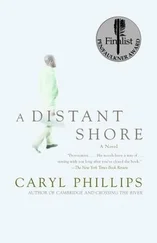In the early summer of 1953, the two biggest British news stories were the coronation of Queen Elizabeth II, and the triumphant ascent of Mount Everest by a British expedition led by a New Zealand mountaineer, Edmund Hillary, and his Nepalese guide, Sherpa Tensing Norkay. Most people were also excited because television, or the 'goggle-box', had become the latest status symbol and the new invention was beginning to change family and social life. However, the vast majority of the British public still got their 'visual' news from the cinema, and the third story that would have gripped British audiences at cinemas up and down the country during the summer of 1953 was the news of Randolph Turpin's triumph over the Frenchman Charles Humez before a sell-out crowd of 54,000 at White City Stadium, London, in the final elimination bout for the now vacant world middleweight crown. Despite having trouble making the weight, Turpin comprehensively outpointed Humez, but not before disappointing a huge number of his own fans with his lacklustre performance. Everybody in Britain knew that Turpin carried a potential knockout punch in both hands, yet for much of the fight he had done little more than flick out timid left jabs, much to the audible dismay of the crowd. Nevertheless, he had beaten Humez, and Turpin would now be returning to New York City, this time to fight the Hawaiian American Carl 'Bobo' Olsen for the undisputed world title in a bout that most boxing cognoscenti confidently expected Turpin to win. Two years after his close rematch with Robinson, Turpin and his party once again found themselves sailing across the Atlantic Ocean towards a New York City that Turpin claimed he was eager to revisit. He told his brothers that he missed the twenty-four-hour excitement of the city, and the attention that he had been paid, but he did not confess to them his ambivalence about having to rekindle his association with Miss Adele Daniels.
Shortly after Turpin's arrival in New York City in October 1953, it soon became clear that, unlike his previous visit in the summer of 1951, when Turpin at least maintained the appearance of being eager to train for the Robinson rematch, this time he was preoccupied and disinterested in applying himself to the task at hand. Frequently absent from the training camp that George Middleton had established in the Catskill Mountains, and distant and sometimes abrasive to those who tried to talk with him, Turpin alienated the press, his camp, and particularly his brothers. It was obvious that Turpin had no desire to fight Carl 'Bobo' Olsen, nor did he wish to be in the United States and away from 'home', and his sulking and temper tantrums quickly wore on everybody's nerves. On the night of the world title fight the inevitable ensued, and what should have been a night of glory for Randolph Turpin and British boxing ended ignominiously with a humiliating defeat at Madison Square Garden. Untrained and out of condition, Turpin nevertheless began strongly enough, taking the first three rounds against Olsen, but in the fourth he suffered a bad cut under his eye. For the remainder of the fight he was off-balance and he constantly soaked up punishment, and in both the ninth and tenth rounds an ordinary-looking Olsen pummelled him to the canvas. Clearly Turpin's mind was elsewhere, and the sell-out crowd witnessed the British middleweight take a terrible pounding before losing a unanimous points decision.
So badly was Turpin beaten that, back at his hotel, his seconds covered him in ice cubes and wrapped him in a bed sheet in order to reduce the multiple swellings. Turpin knew that he had let himself and others down, but he was acting as though he could not care less. 'If I had been in my natural mental state,' said Turpin, 'I could have stopped him about the eighth round.' Nobody said anything in reply. Boxing News summed up the mood of the times: 'If ever a fighter went into the ring mentally unprepared it was Turpin. The undeniable fact is that Turpin has gone back a long way. He has things on his mind more important than boxing and when that happens a fighter has "had it", to use a wellunderstood expression.' Britain's Daily Sketch , under a headline that blared 'He's let us down!', seemed to be clear about what had gone wrong. 'Now it has been exposed — the myth of the boxer who can train himself. Randolph Turpin made a pathetically heroic effort to justify his unorthodoxy in the Madison Square Garden ring last night.' Turpin's fans on both sides of the Atlantic were clearly dismayed by the fighter's behaviour both before, and during, the fight. But things were about to deteriorate even further.
On the morning of 2 November, 1953, the day before Turpin was due to board the Queen Mary for the return journey to England, the 'Leamington Licker' was arrested by New York City police officers in a milk bar opposite the Hotel Edison on West 47th Street. He was listening to the jukebox when the police stormed in and handcuffed him and then took him to the Seventh Precinct for processing. Shortly thereafter, Turpin appeared at the Upper Manhattan Magistrates' Court to answer a serious charge which had been brought against him by a Miss Adele Daniels, who was described in the court papers as a 'Negro Clerk in the State Department of Labor'. Miss Daniels testified that her relationship with Randolph Turpin had begun two years earlier when the fighter was in New York for his rematch with Sugar Ray Robinson, and she insisted that the boxer had promised to marry her. In the two-year interim she asserted that the couple had exchanged many love letters and were planning a shared future, and that when Turpin had recently returned to New York for the fight with Olsen their relationship had picked up again from where it had left off. However, she claimed that Turpin had changed, and that even before the fight, when he should have been in the Catskill Mountains at his training camp, this newly 'troubled' Turpin was spending time with her at her apartment on Riverside Drive at 125th Street in Harlem, but she grew to be frightened of him. She alleged that Turpin had assaulted her on a number of occasions, kicking her and striking her around the face. In fact, after the Olsen contest, in which the British fighter had been badly beaten and was in need of attention, Miss Daniels claimed to have 'loyally nursed him' and in return for her troubles she was again beaten and kicked by this 'maniacal and dangerous person', so much so that for a short while the left side of her face had suffered temporary paralysis. Miss Daniels' lawyer, Mr J. Roland Sala, wanted Turpin held in custody so that he might be properly examined, for Sala claimed that Turpin was 'definitely mentally ill, psychopathologically'. He continued: 'This man is bestially primitive.'
Turpin's lawyer, Saul Straus, argued that if Miss Daniels had received the beatings that she claimed to have done, then there would be serious marks on her body. In fact, there were none. George Middleton had already instructed Turpin's lawyer that the key issue here was to get Turpin on the boat to England, and so Straus arranged with the judge for Turpin to be released into his custody with the payment of a $10,000 bond, and a promise that Turpin would eventually return to the United States for the full hearing. In the meantime, Miss Adele Daniels withdrew the assault charge, insisting that she had not been offered money to do so, nor had she been threatened. Mr Sala remained determined, and he made it clear that a civil suit would soon be launched against Turpin, whom he described as 'anti-American'. He continued, claiming that Turpin 'should be everlastingly grateful to our American system of democracy — a system he has maligned and defamed openly and notoriously'. On the following day, the eight members of Turpin's party were able to board the ship and begin their journey back to England.
Читать дальше











![Unknown - [Carly Phillips] The Bachelor (The Chandler Brothe(Bookos.org) (1)](/books/174132/unknown-carly-phillips-the-bachelor-the-chandle-thumb.webp)
